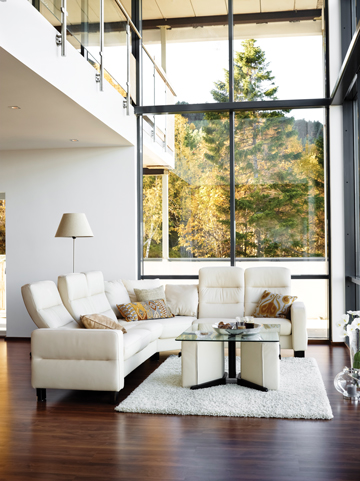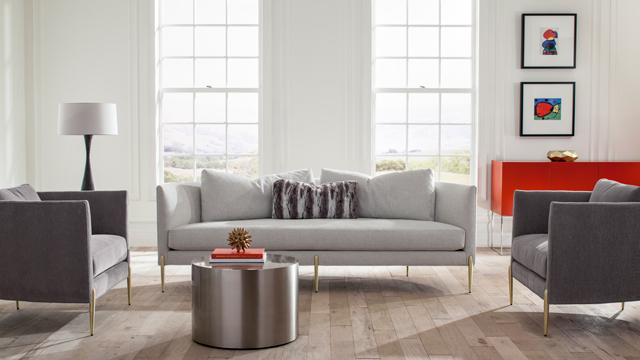As you protect your family from dangers of the sun with SPF 50, big floppy hats, and swim shirts, consider what that same hot ball of heat is doing to your furniture. With the summer sun beating down, it’s timely to discuss how to protect your furniture investment from heat and ultra-violet rays.
 Leather
Leather
Leather is a hide of skin, and just like with your own skin, leather and sunlight do not get along. Too much sunlight can lead to two problems with leather furniture: drying out and color fading. Strong UV rays can cause all leathers to fade or change color, even light colors. Leather furniture doesn’t need to be in direct sun to suffer, either. The best solution is to move your leather furniture so that all sides fade equally. If that’s not an option, invest in blinds, drapes, or window tinting to protect all the furniture in the room. The sun’s dry heat also causes moisture in the leather’s natural oils to slowly evaporate, resulting in a stiffer hide and possible cracking. Once leather’s natural oils dry out, rehydration is not an option, so preventive care is important. Condition and clean your leather furniture regularly (using furniture-appropriate products) to help keep the leather supple.
Fabric
Fabrics are not exempt from sun-caused fading. UV radiation causes fabric dyes to break down chemically. Because most natural fibers (cotton, wool, linen, silk) start out white or almost white, they must be dyed to achieve a color, and the UV rays cause the fabric to fade to its natural state. Manmade fabrics (with the exception of acetate) are always dyed and tend to have some protection that can act as a sun barrier. If your room gets lots of natural light, look for fabrics with built in repellents or protection, such as Sunbrella, a fabric formerly relegated to outdoor use. Now available in a huge range of colors and textures, more interior upholstery manufacturers use Sunbrella because of its cleanability, durability, and its protection against sun damage.
Wood
Like human skin, your wood furniture can get tan lines. Different species behave differently. While cherry darkens to a warm red and maple to a golden yellow, walnut actually lightens or bleaches out. Unless you keep cloths over your wood furniture all the time (and who wants to do that?), embrace the color changes as part of the beauty of the wood. That said, while the wood color is evolving, it is best to move or remove any items sitting on the surface, unless you do want to see the tan lines beneath them. If you leave a bowl on your table for several months, you’ll notice a sun ring when you move it. When you move the bowl, that section will catch up with the rest of the table eventually, but it will take some time.
Wood furniture can also dry out from heat from the sun or from the dry air created by dehumidifiers and air conditioning. Conversely, a humid environment can cause wood to swell and crack. Solid wood in particular can shrink and swell with changes in humidity, while furniture with wood veneer over a substrate, such as engineered wood, can be more stable and resistant to shrinking and swelling. Protect your wood furniture by maintaining a somewhat constant temperature and humidity level in your home. For waxed and oil-finished wood, condition the surface with an appropriate furniture product to help prevent cracking.
In homes today, light-filled rooms are sought-after spaces. While previous generations covered their windows with heavy drapes to protect fine furniture, there are alternatives today. Choosing finishes and fabrics carefully at the onset, positioning items away from vents and direct sun when necessary or possible, adding UV window protection, and maintaining furniture regularly and correctly will help you beat the heat and reduce damage from that bright sun.
Photos: Øystein Klakegg




